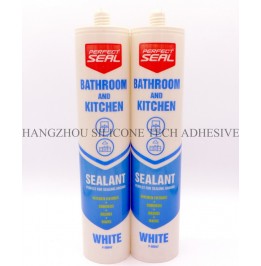Sealants exposed to continuous water immersion, such as in swimming pools, aquariums, or underwater infrastructure, face unique challenges. Their long-term performance depends on how they respond to prolonged moisture exposure, particularly their swelling behavior. Understanding these dynamics ensures proper material selection and application for water-related projects.

When sealants absorb water, their polymer chains may expand, causing dimensional changes. This swelling rate varies based on the sealant’s chemical composition, cross-linking density, and the surrounding water’s chemical properties. Uncontrolled swelling can lead to joint failure, reduced adhesion, or structural stress, compromising the seal’s integrity over time.
Polyurethane and silicone-based sealants exhibit different swelling behaviors. Polyurethanes, for example, may absorb more water due to their hydrophilic segments, leading to higher swelling rates. Silicone sealants, while generally more hydrophobic, can still swell if exposed to certain solvents or extreme moisture conditions. The choice of polymer directly influences long-term stability in wet environments.
The surrounding environment plays a critical role in determining how much a sealant swells during immersion. Temperature fluctuations, water pH, and the presence of dissolved chemicals can accelerate or mitigate swelling. For instance, warm water increases molecular activity, potentially raising absorption rates, while acidic or alkaline conditions may degrade sealant components.
High temperatures soften sealant matrices, making them more susceptible to swelling. Similarly, water containing salts, chlorine, or other additives can interact with sealant ingredients, altering their swelling properties. Testing sealants under simulated conditions—such as varying temperatures or chemical exposures—helps predict real-world performance and identify potential vulnerabilities.
Proper installation reduces the likelihood of excessive swelling in water-immersed sealants. Surface preparation, joint design, and curing conditions all influence how sealants interact with moisture. For example, inadequate cleaning of substrates may leave contaminants that weaken adhesion, allowing water to penetrate and trigger swelling.
Deep or narrow joints may trap water, creating prolonged exposure zones that exacerbate swelling. Designing joints with appropriate width-to-depth ratios ensures water drains efficiently, reducing immersion time. Additionally, using backer rods or bond breakers can control sealant thickness, preventing uneven swelling that leads to cracking or detachment.
Even with optimal material selection and application, sealants in water-immersed environments require regular inspection. Swelling may not manifest immediately but could develop over months or years, especially in dynamic settings like tidal zones or fluctuating water levels. Monitoring for changes in joint width, surface texture, or adhesion helps detect early signs of swelling-related degradation.
Ultrasonic thickness gauges or laser profilometry can measure sealant dimensions without damaging the material. These tools identify subtle swelling before it becomes critical, allowing for timely repairs or replacements. Documenting inspection results over time creates a baseline for comparing performance and adjusting maintenance schedules as needed.
Sealants interact with surrounding substrates, such as concrete, metal, or glass, which may have different moisture absorption rates. Dissimilar materials can create stress concentrations at joint interfaces, accelerating swelling or cracking. Ensuring compatibility between sealants and adjacent materials through adhesion tests or mock-up installations prevents long-term failures.
In environments with aggressive chemicals, such as industrial wastewater or saltwater pools, sealants must resist degradation alongside swelling. Some formulations include additives to enhance chemical stability, but these may alter swelling properties. Balancing resistance to specific chemicals with acceptable swelling rates requires careful formulation analysis.
By addressing these factors—from material selection to maintenance—professionals can mitigate the risks associated with long-term water immersion and swelling in sealants. Proactive planning and regular evaluation ensure durable, watertight seals in challenging aquatic environments.
Copyright 2019 by Hangzhou Silicone Tech Adhesive Co., Ltd. All rights reserved.
Bathroom Sealant | Acrylic Sealant | Dow Corning 795 | Aquarium Sealant | Dow Corning 732 | Clear Silicone Sealant | Polysulfide Sealant | Glazing Sealant | Mirror Sealant | IG Sealant
Powered by Onepound